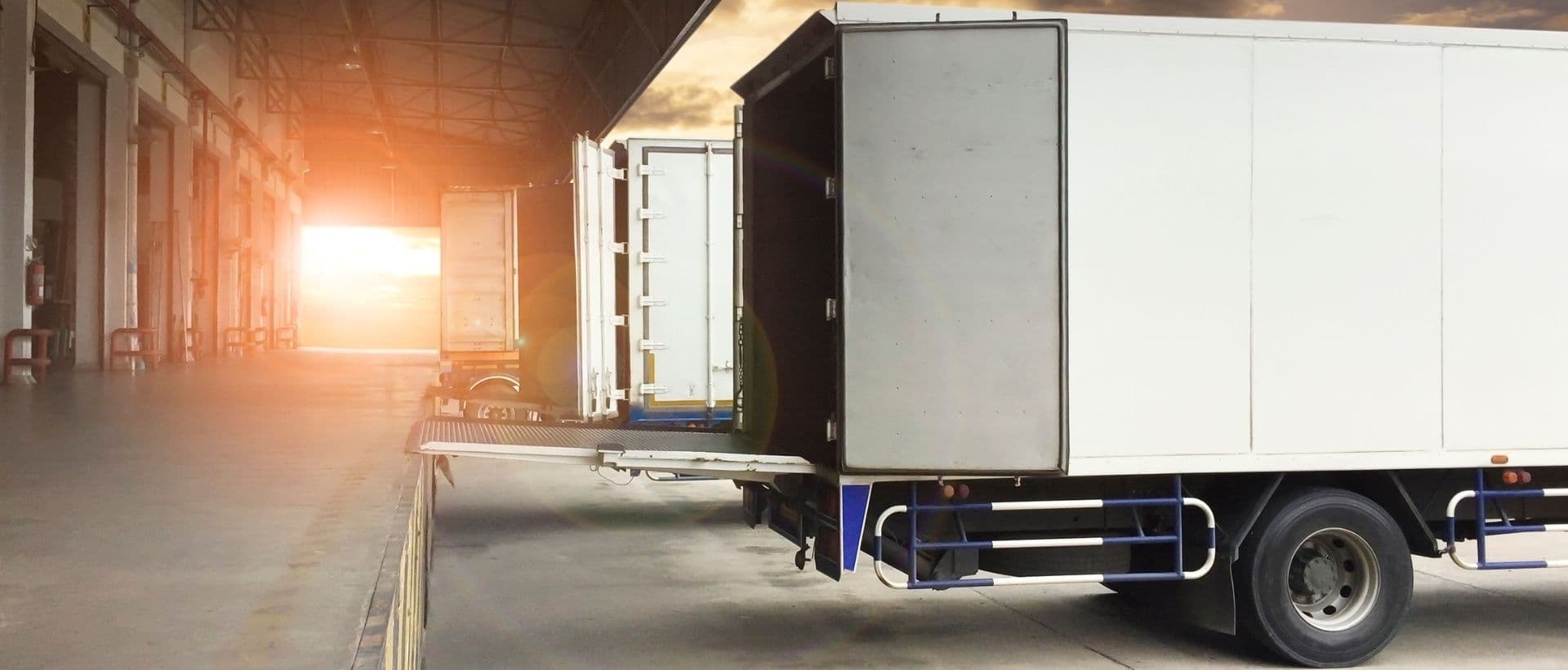
- What is Commercial Shipping Explain With an Example?
- 7 Key Components of Commercial Shipping
- 6 Types of Commercial Shipping
- Commercial Shipping vs. Regular Shipping
- How to Choose the Best Commercial Shipping Logistics for Your Company?
Most Swiss chocolates sold in India are manufactured locally. But what if your company really deals in importing Swiss chocolates?
So, before reaching your warehouse, they have an incredible journey of thousands of miles through international waters, ports, and seas. This worldwide network of transportation can be considered Commercial Shipping.
But this is not that simple either; let's explore it in depth throughout this article to understand commercial shipping.
What is Commercial Shipping Explain With an Example?
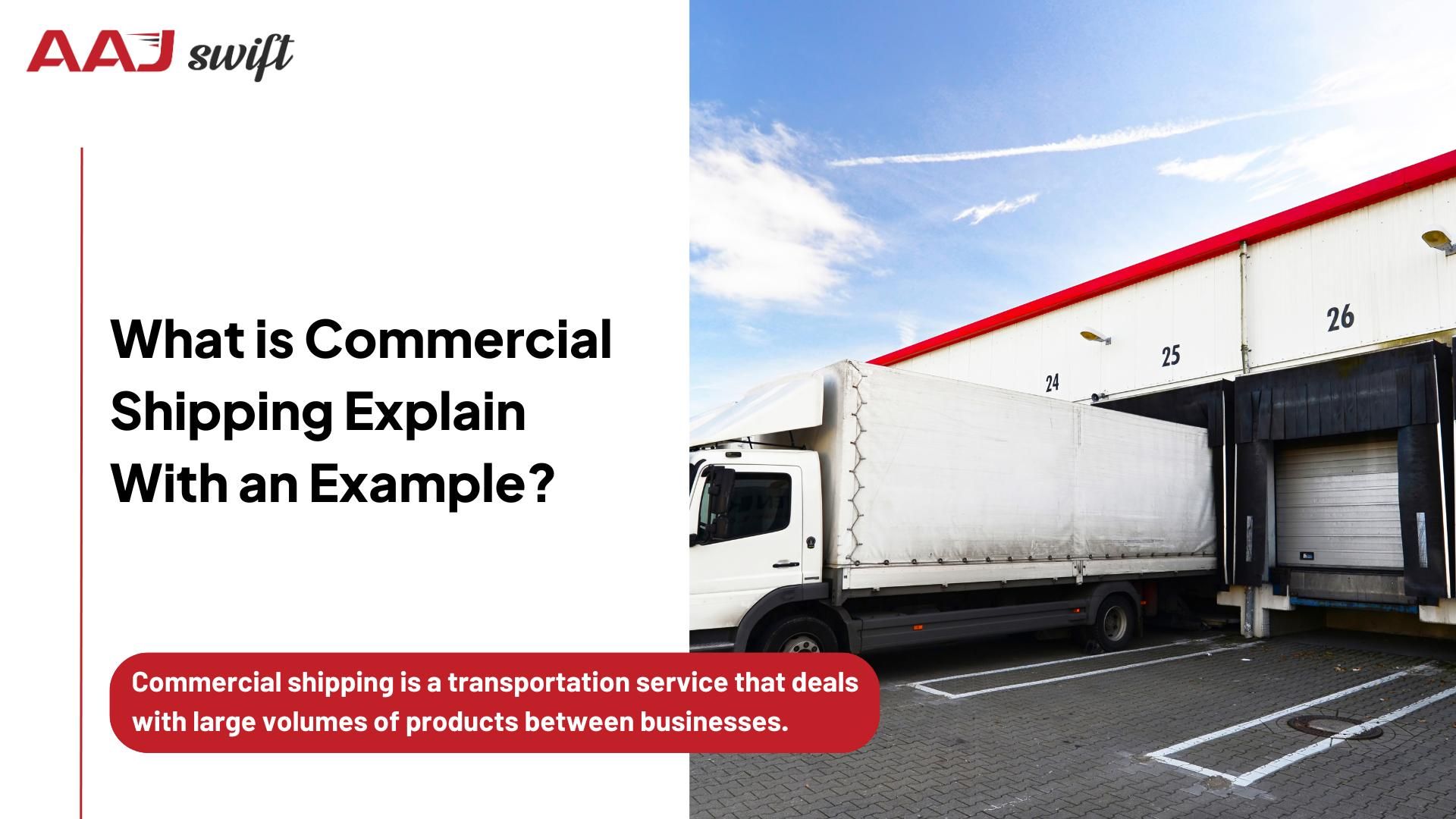
Commercial shipping is a transportation service that deals with large volumes of products between businesses. You can call it classic B2B shipping, where all of the transportation is only done between businesses rather than the end consumer.
However, it can range from local deliveries (in the case of bulk orders of B2B) to international ocean freight. That's the reason why these shipments are not that simple. In most cases, it involves at least two different countries, so you need to have proper documentation, customs clearance, insurance, and compliance with their international regulation.
Apart from this, it involves three main activities such as freight forwarding, bulk cargo transport, and supply chain logistics.
Example of Commercial Shipping:
Let's say a clothing retailer from Sri Lanka ordered 10k t-shirts from a manufacturer in Gujarat. The manufacturer packed the clothes, which were then transported by truck to the port of Mumbai.
Then, those containers were loaded onto container ships bound for Sri Lanka. During transit, the vessel may stop at smaller ports before reaching Colombo Port, Sri Lanka.
At last, the substitute or logistic partner unloaded the container, cleared the customs, and delivered it to the retailer's warehouse by truck.
7 Key Components of Commercial Shipping
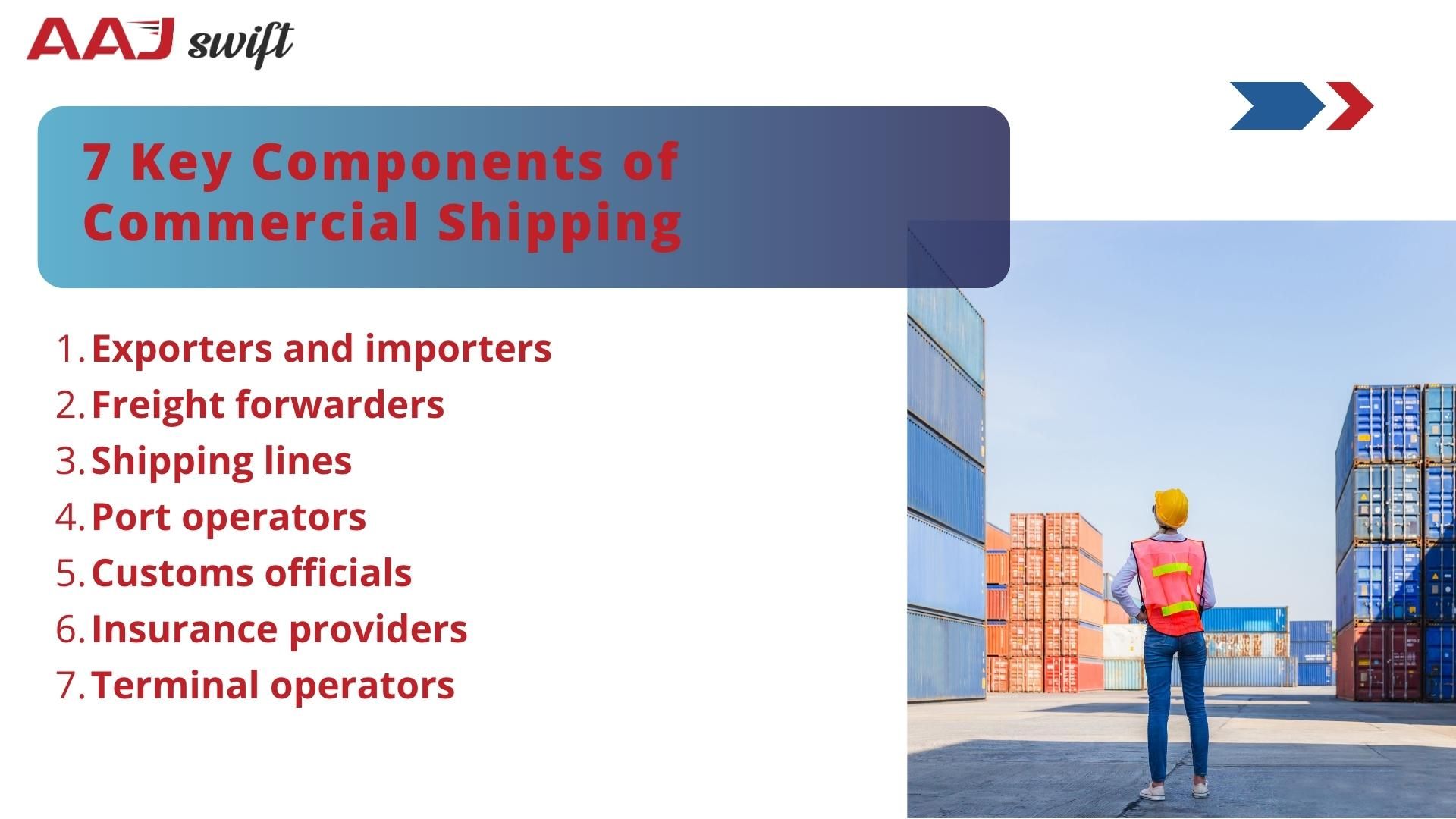
As per the above example, i.e., shipping from Gujarat to final delivery to the retailer's warehouse in Sri Lanka, the process involves 7 major key components. These are:
- Exporters and importers: Businesses that are buying and selling goods across borders.
- Freight forwarders are the intermediaries that are responsible for transportation for shippers.
- Shipping lines: Companies operating cargo vessels that transport containers.
- Port operators are entities to manage harbor facilities and cargo.
- Customs officials ensure compliance with import/export regulations.
- Insurance providers offer protection against any loss or damage to the product during transit.
- Terminal operators manage loading/unloading facilities at ports.
So, each of the players in commercial shipping ensures an efficient movement of shipments across the globe while complying with international trade laws.
6 Types of Commercial Shipping
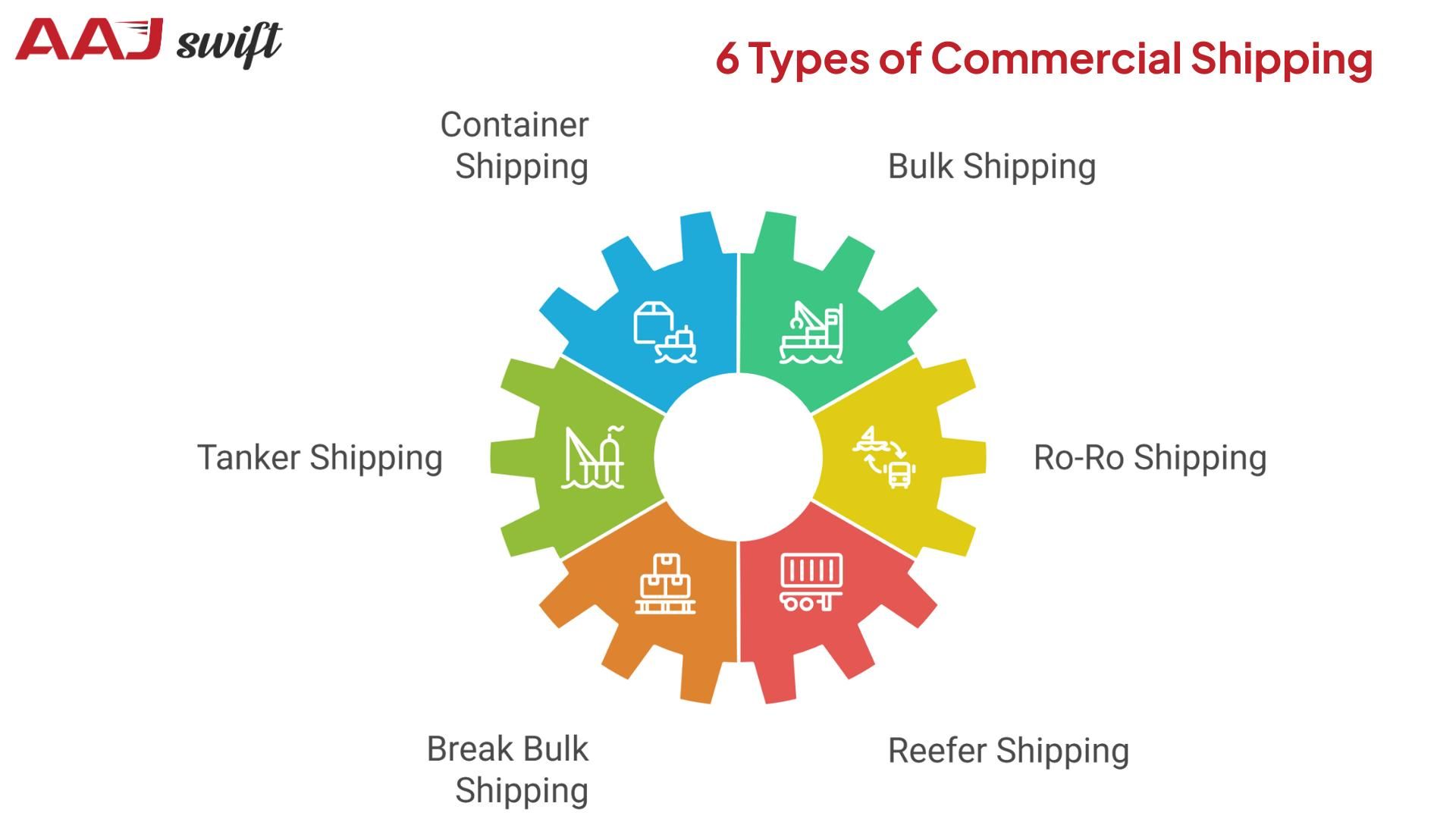
Commercial shipping encompasses several specialized categories, each designed to transport specific types of cargo:
- Container Shipping
- Bulk Shipping
- Tanker Shipping
- Ro-Ro Shipping
- Break Bulk Shipping
- Reefer Shipping
1. Container Shipping
It is the most widely used commercial shipping method that comes in several sizes. The most common and standardized container size is 20ft or 40ft to carry packaged goods.
Due to their standard size, these containers can easily be loaded and unloaded, stacked, and transported efficiently over long distances, along with an easy transfer mode of operation.
The following are key details:
- Key Players: Maersk, MSC, CMA CGM, COSCO, Hapag-Lloyd.
- Ideal for: Manufactured goods, retail items, electronics, and low-weight machinery.
- Advantages: Protection from the outer environment, security, and intermodal handling capability.
2. Bulk Shipping
Bulk carriers are specially designed to transport unpacked cargo as it is (directly into vessels), such as grain, coal, ore, cement, wood chips, etc.
They usually have large hatches on their main deck that hold the cargo efficiently for loading and unloading.
There are three main types of bulk carriers:
(a) Dry bulk carriers: grain, coal, iron ore, cement.
(b) Liquid bulk carriers: oil, chemicals, LNG.
(c) Neo-bulk carriers: lumber, paper, steel.
Major drawback: As in bulk shipping, unpacked cargo is transported, and special loading and unloading equipment, including conveyors, cranes, and pneumatic systems, is required. That means these bulk carriers are only allowed at a specialized port facility.
3. Tanker Shipping
They use containers to transport liquid cargo in their specialized tanks. These containers generally have double-hulled structures that prevent any leakage and spillage during collision or grounding.
The following are the most common tankers and cargo types:
Please note: It is a sub-type of bulk shipping, but they are usually categorized separately because of their frequent use as a shipping means for carrying oils.
4. Roll-On/Roll-Off (Ro-Ro) Shipping
As per the name, Roll-on/Roll-off (Ro-Ro) ships are engineered specifically for wheeled cargo transport. So, the vehicles are loaded and unloaded directly on and off the vessel one by one.
These ships resemble multi-level parking structures with proper lanes and ramps for easy docking. A standard Ro-Ro ship can transport:
- Passenger vehicles
- Commercial trucks
- Construction Equipment
- Military vehicles
There are 3 main Ro-Ro vessel types:
- Pure Car Carriers (PCCs): Exclusively for automobiles.
- Pure Car and Truck Carriers (PCTCs): Can accommodate both cars and larger vehicles.
- ConRo vessels: Hybrid ships can carry both wheeled cargo and containers.
Based on the vehicle type, it can easily accommodate 400-800 vehicles. However, this process can be time-consuming if there is less manpower to drive them.
5. Break Bulk Shipping
Heavy machinery, bagged goods, steel products, wind turbines, etc., can't be loaded in regular containers. In all those cases, bulk shipping comes in handy.
These vessels usually have:
- On board heavy lift cranes
- Multiple holds facilities
- Lifting gears
6. Reefer Shipping
Also called Refrigerated container ships. These special containers have a temperature control system that can maintain the temperature from -30°C to +30°C. Because of their temperature control system, they are used to transport items such as fruits, vegetables, meat, dairy products, and pharmaceuticals.
In addition, modern reefers also include an atmospheric control system that manages the oxygen, carbon dioxide, and humidity levels.
Major drawback: It usually requires external power systems to maintain the temperature for longer shipments.
Commercial Shipping vs. Regular Shipping
How to Choose the Best Commercial Shipping Logistics for Your Company?
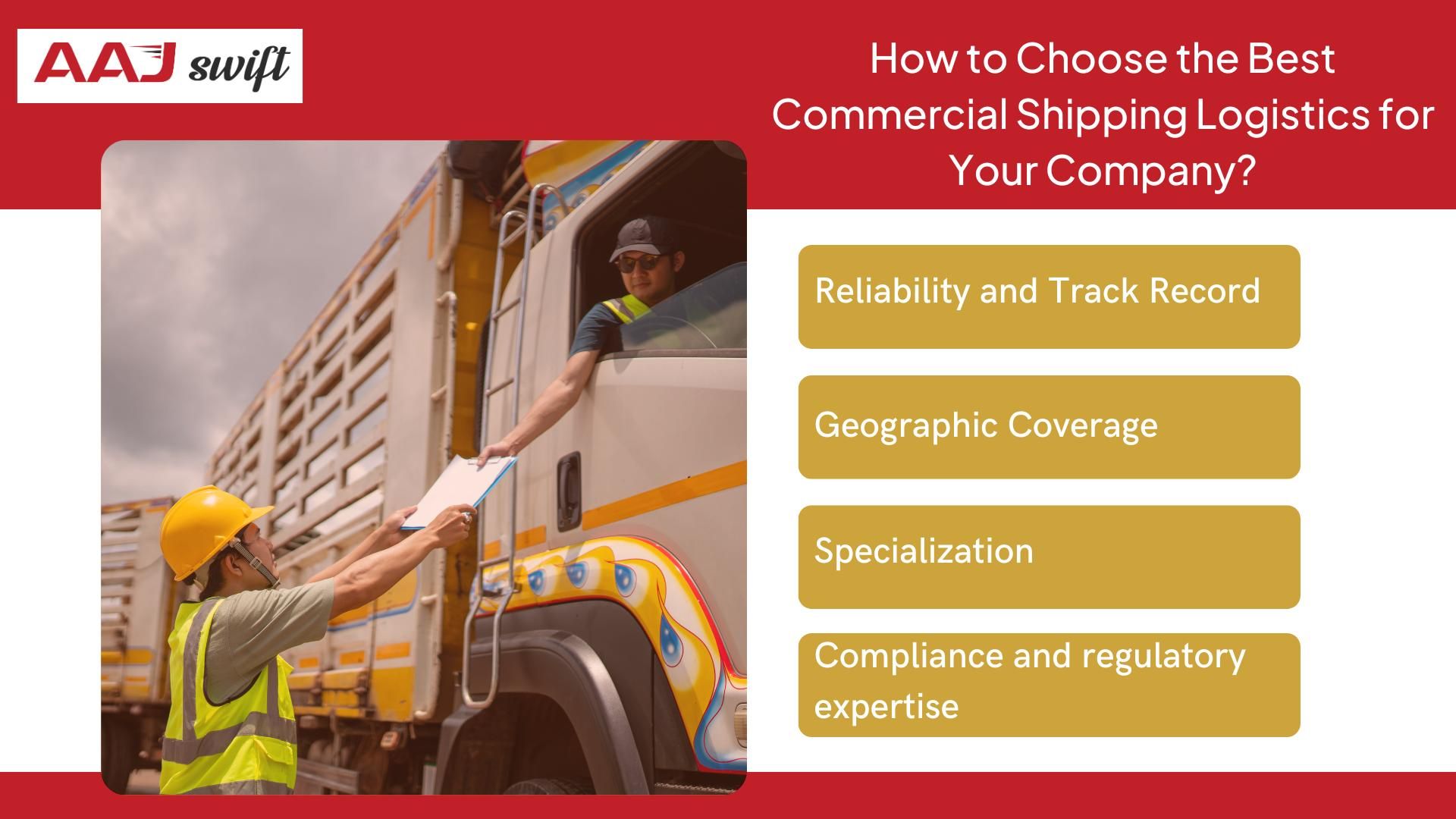
Here are a few pointers that you should always look for before choosing the B2B transport company:
- Reliability and Track Record: Check the historical performance, on-time delivery rates, years of operations, and, most importantly, clients' testimonials.
- Geographic Coverage: Check for the global and regional presence and their local and overseas partners.
- Specialization: If your shipment needs extra expertise, such as pharmaceutical products, products with shorter expiry dates, etc., you must check how they handle and ship such items.
- Must have real-time tracking and monitoring capabilities for easy tracking.
- Compliance, regulatory expertise, and prior relation with international trades and certification (ISO, C-TPAT).
- Dedicated account management and 24/7 responsive support team.
- Inventory management and order fulfillment options.
Why Choose AAJ Swift for Your Commercial Shipping Business?
If you're looking for commercial shipping logistics, we, AAJ Swift, will be your best choice.
We deliver exceptional B2B and B2C shipment solutions for your businesses that can distinguish us from the rest of the logistics companies.
We offer:
- Customized rate cards to handle business with bulk shipments with minimal transportation rates.
- Automated transport selection rules that help your business optimize space and enhance cost-effectiveness.
- We offer industry-lowest transportation rates.
- B2B-focused PTL transport solutions for commercial shipments
- 100% Proof of Delivery (POD) access is available anytime for your online access.
- One of the most lovable features of doing business with us is that we offer a single point of contact for streamlined communication.
With our affordable transportation rates and 100% transparency, you can confidently choose us for your commercial shipments.
As we can proudly say, "We understand businesses’ needs beyond their basic package delivery."
So, contact us right now and help us to deliver your products to other businesses or consumers.


